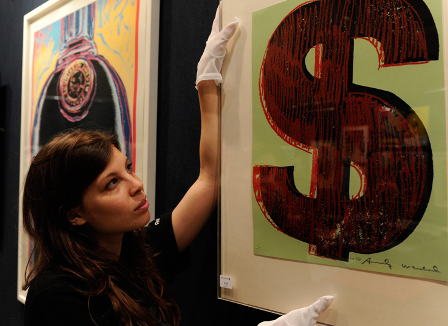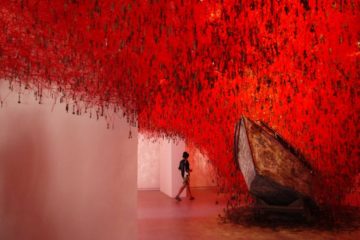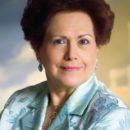
Investing in art
Art has long been considered an “investment of passion” that not only offers aesthetic utility but the potential of economic benefit. Only recently, however, has art been viewed through the lens of modern portfolio theory and considered a potential alternative investment as part of a portfolio of assets. Though research continues to shed more light on what has been historically an opaque market, studies show that art can offer long-term return potential that is uncorrelated with other asset classes.
Market paradigms have shifted dramatically over the last several decades, as newly created wealth in emerging markets like China, Russia and the Middle East have increased new participants in the art trade, which has given the market signs of greater resiliency. Undeterred by a rough economic environment in recent years, collectors globally are paying record sums for top works. Despite art’s attractive upside as an investment, the lack of market transparency, illiquidity and high object costs have generally kept participation to a select class of wealthy individuals. However, growing interest in the art market has spurred the creation of new investment products that invest in art and give a new breed of investors exposure to the art market. In the following pages, we will examine the unique aspects of the art market, highlight recent trends, weigh the pros and cons of investing in art and discuss ways to gain exposure to this unique asset class.
Global Art Market Overview
Given the murky nature of the art market, it is often misunderstood by investors. Unlike most traditional asset classes like stocks or bonds, there is very little transparency associated with art trading. A large segment of the market is executed through private transactions, which makes it difficult for outsiders to gain insight. Detailed information mostly comes from publicly available data on transactions executed through auction houses. Though Sotheby’s and Christie’s are the biggest and most well known, countless others exist around the world. This overall lack of transparency makes estimating the size of the market challenging. So just how big is the global art market? According to The European Fine Art Foundation (TEFAF), the total size of the global art market is about $60 billion, which reflects public auction data and an estimate of art gallery and private art dealer sales during 2011. This represents a six-fold increase in size over the last 20 years.
There exist several types of players in the art market. The buy-side is heavily concentrated in high net worth individuals (HNWI) and collectors. Art dealers, corporations and museums are also major buyers in the market. In a recent survey of wealthy individuals, almost 50% of respondents own fine art and, on average, art makes up nearly 4% of the average HNWI’s total wealth.1 On the sell side are auction houses, galleries and the artists themselves. In addition, intermediaries such as art consultants and private banks help facilitate transactions through expertise, research and financing.
As global wealth grew exponentially beyond North America and Europe in the last several decades, the art market has become more globally influenced than ever before. According to the 2012 RBC/Capgemini World Wealth Report which analyzes economic factors that drive wealth creation, Asia-Pacific surpassed North America in high net worth individual population to become the largest HNWI region for the first time. With newly acquired wealth, demand for luxury goods increases. Fueled by triple-digit growth in recent years, China (including Hong Kong) has overtaken the U.S. as the world’s largest market for art and antiques, representing 30% of the global market in 2011, versus 29% for the U.S.
It is worth noting certain art genres will do better than others, for a number of reasons. Art can be an unpredictable investment in which returns can be heavily influenced by not only a number of macro-factors such as economic growth and inflation, but also micro-factors unique to the market such as global interest in certain genres and changes in trends, tastes and culture. Similar to the equity market, sectors will behave very differently in terms of performance and volatility (think technology vs. utilities). “Sectors,” or genres of the art market will also perform quite differently. As Figure 2 shows, over the last 25 years, the Mei Moses World Post-War Contemporary Index greatly outperformed the Mei Moses World Impressionist Modern Index with quite different volatility. As with other asset classes, investors should look to diversify their holdings to manage their exposure to one specific genre, artist or type of work.
As emerging markets become wealthier, the art market is likely to continue to be comprised of a much more diverse set of art buyers. This is generally good news for the art market. When investors are concentrated in one geographic region, the art market as a whole is very sensitive to that region’s economic environment. For example, a steep decline in the art market in the early 1990s was in part attributable to the decline in the Japanese economy. During the highly inflationary 1980s, Japanese investors were investing heavily in the art market. As the Japanese real estate market collapsed, wealth crumbled and many segments of the art market crashed. A more global market makes a more resilient one.
Conclusion
The art market has undergone significant changes over the last several decades. Newly acquired wealth in emerging economies has globalized the market in many ways, giving the market much needed depth and resiliency. Studies have shown relatively strong returns over extended periods of time, and recent risk-adjusted performance looks comparable with other traditional asset classes. Low and even negative correlations with equities and fixed income suggest an allocation to art can potentially diversify one’s portfolio. In addition, solid returns during periods of high and rising inflation indicates that art can be an effective hedge against inflation. Performance measurement of the asset class is not without limitations and assumptions which should be considered when looking at historical returns.
Collectors invest in art for a variety of reasons. However, art as a pure financial investment poses challenges. It is highly illiquid, the market lacks transparency and efficiency and it is expensive to acquire and maintain. Investors looking to gain exposure to art have many new options with the advent of new financial products and specialty funds. As with any asset class, investors must do their homework. Learning about the market, genres, history, trends and artists is a must and assessing how it would fit in a broader asset allocation is critical.
SURSE: JP Morgan. Beautiful Assets Advisors, The European Fine Art Foundation









